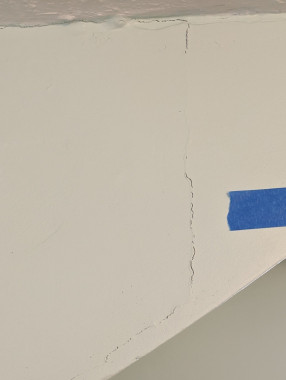What is the best way to fix cracks before repainting ( lemmy.world )
I am renovating my son’s bedroom and trying to make the walls as nice as is reasonable before repainting. There are a few cracks like this in the paint. It looks like on top of the drywall there is paint, wallpaper, and then a few more layers of paint. The cracks could be at the seams of the drywall from expansion and contraction. They could be at the seams of the wallpaper. They could be something else. Most of the cracks come straightish down below the sides of windows, which makes me think drywall seams.
I gouged out one crack and filled it with joint compound to see how that works. Since the drywall is old, it was really hard to tell if this is at a drywall seam or not - there are places where previous work, maybe mouse damage, and who knows what else has made the drywall crumble from behind. These are the joys of an older house!
How would you handle this?
